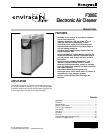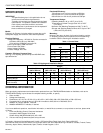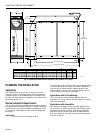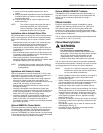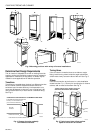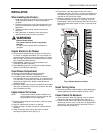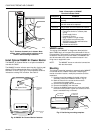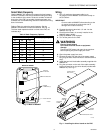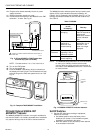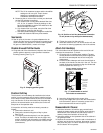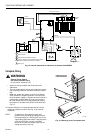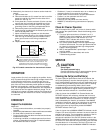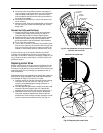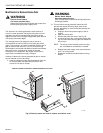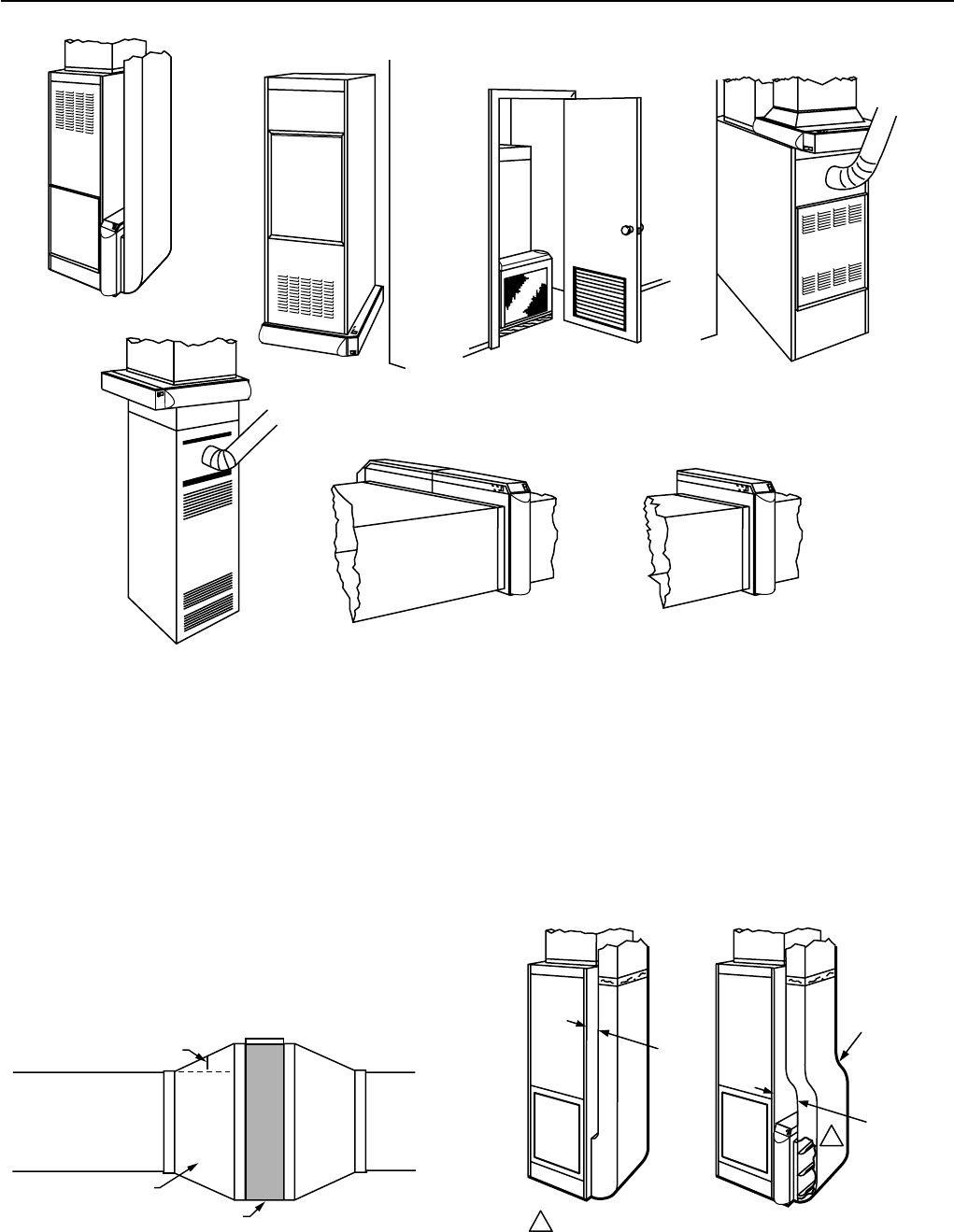
F300E ELECTRONIC AIR CLEANER
68-0240-1
6
Fig. 3. Mounting positions with variety of furnace installations.
Determine Duct Design Requirements
The air cleaner is adaptable to all new or existing forced air
heating, cooling and ventilating systems used in residential
applications. Transitions, turning vanes, or offsets may be
needed in some applications for effective operation.
Transitions
Transitions are needed when the duct is a different size than
the air cleaner cabinet. Gradual transitions reduce air
turbulence and increase efficiency. Limit expansion to no
more than 20 degrees or about 4 in. per running foot (100
mm per 300 linear mm) on each side of a transition fitting.
See Fig. 4.
Turning Vanes
If the air cleaner is installed close to an elbow or angle
fitting, install turning vanes inside the angle to distribute
airflow more evenly across the face of the cell. See Fig. 5.
Offsets
If the duct connection to the furnace in a side installation
allows less than 7 in. (178 mm) for mounting the air cleaner
cabinet, add an offset to the elbow. See Fig. 5.
Fig. 4. Change duct size gradually
to minimize turbulence.
20 DEGREE EXPANSION PER SIDE PER
FITTING (4 in. PER LINEAR FOOT
[100 mm PER 300 LINEAR mm]).
RETURN
AIR DUCT
TRANSITION FITTING
ELECTRONIC AIR CLEANER CABINET
M5626A
CHANGE DUCT SIZE GRADUALLY TO MINIMIZE TURBULENCE.
M14732A
A
B
C
D
E
F
G
M14733
LESS
THAN
7 in.
(178 mm)
OFFSET
AT LEAST
7 in.
(178 mm)
1
1 TURNING VANES HELP DISTRIBUTE AIRFLOW EVENLY.
TYPICAL USE OF DUCT OFFSET TO ALLOW
SPACE FOR ELECTRONIC AIR CLEANER.
Fig. 5. Typical use of duct offset to allow
space for electronic air cleaner.



